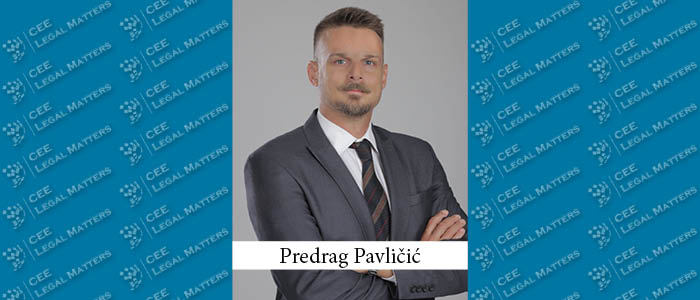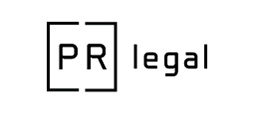Amidst the adoption of the Artificial Intelligence Act by the European Union Council, as the world’s first legislation setting a global standard for regulating artificial intelligence (“AI“), we are entering into the still unregulated territory of the relationship between patent law and AI.
Patents are a significant source of new technical information and inspiration for future generations of researchers and inventors. To protect an invention with a patent, a solution to a specific problem can come from any technical field.
A patent is an absolute property right granted for an invention that:
- is novel – identical solutions have not been made available to the public;
- involves an inventive level – the invention is not obvious compared to known solutions;
- is industrially applicable – it can be produced or used in any branch of industry.
Machine and/or Human as Patent Creator
Firstly, how do we define AI? AI represents technology that:
- demonstrates reasonable and intelligent behavior based on the analysis of its environment;
- makes decisions with a certain degree of autonomy to achieve specific goals.
The emergence of AI has raised new questions and challenges for patent frameworks to adapt to AI technologies. For the first time, computer technology is not merely aiding in the creation of inventions, machines can generate new and inventive solutions even without human intervention. This raises the question: can an AI system be considered an inventor, or must an inventor always be a natural person?
Moreover, innovations in AI involve collaboration in projects and joint work by multiple inventors. In the modern IT era, individual inventors are becoming obsolete as innovations arise from collaboration among multidisciplinary teams of experts. This situation raises questions about who will be credited as the inventor if, despite the involvement of an entire team, a machine creates the invention, and how compensation will be determined for team members whose data contributed to the development of the innovation.
Currently, from the perspective of Serbian patent law, the operational technology of AI systems based on computer programs is not relevant to patent law, nor are computer programs the subject of inventions under the Patent Law.
There are many obstacles to overcome before AI can be safely integrated into patent law:
- confidentiality of client data;
- reliability on AI without human verification;
- ethical issues regarding the use of AI that are not covered by the obligation of lawyers for competent representation;
- patenting success due to future changes in patent laws.
These risks associated with AI systems should be addressed by AI companies themselves before attempting to comply with patent law rules.
Guidelines
In February 2024, the United States Patent and Trademark Office (“USPTO”) released new guidelines on inventorship analysis for AI-assisted inventions. While an AI system cannot be listed as an inventor in a patent application, the USPTO guidelines state that the use of AI by a natural person in the patenting process does not preclude the possibility of obtaining a patent “if the natural person significantly contributed to the conception of the invention.”
The USPTO guidelines also establish five (5) guiding principles to determine when AI-assisted inventions can be patented:
- Human contribution: using an AI system to create an invention does not exclude a person from qualifying as an inventor. A person may be named as an inventor if they significantly contribute to the creation of the invention.
- Conception/identification of the problem: merely identifying the problem or setting a research goal is not sufficient for someone to be considered an inventor. If a person only identifies a problem for which AI is to find a solution, that person does not need to be an inventor. However, if a person creates detailed instructions guiding AI to a specific solution, the person’s contribution may be significant enough to be considered an invention.
- Practice implementation: mere construction or demonstration of the invention is not sufficient to recognize a person as an inventor. Also, identifying an AI solution as an invention is not sufficient. However, if a person takes an AI solution and significantly enhances or modifies it, they may be considered the inventor of that enhancement or modification. Additionally, successful experiments with an AI solution can sometimes demonstrate significant contribution.
- Key contributions: a person who develops a key element on which the invention is based may be considered an inventor, even if they were not involved in every step. For example, designing or training an AI system to solve a specific problem can be a significant contribution if it leads to an invention later on. This does not mean that the programmer of a generative AI system will be considered the inventor of inventions created by a trained AI system. This principle applies only if the system is designed or trained for the purpose of solving a specific problem.
- Intellectual dominance: mere ownership or control of an AI system does not make someone an inventor. Ownership or control of an AI system is not enough without significant contribution to the creation of the invention.
The USPTO guidelines on AI-assisted inventions clearly indicate that inventions lacking a human “co-inventor” do not qualify for patent protection. This decision highlights a significant limitation: valuable and potentially revolutionary inventions created solely by AI systems, without significant human contribution, cannot be patented. This creates a gap where innovative results of AI may remain outside the realm of patent protection, potentially discouraging certain types of research and development driven by AI technologies.
These guidelines have introduced a new requirement for inventors and innovative companies to document human involvement in the invention process whenever AI systems are used. This includes maintaining records demonstrating how humans contributed to the conception of the invention, rather than just executing or identifying outputs generated by AI systems. Such documentation may include meeting notes, design and development documents, instructions, and descriptions of the entire problem-solving process. In future legal disputes, this documentation may be crucial as it provides tangible evidence of human inventiveness and intervention, which are key criteria for the possibility of obtaining a patent. By clearly delineating human contributions, inventors can proactively address potential challenges regarding their invention claims, ensuring that their patent applications comply with the requirements of these new guidelines.
In any case, these guidelines are not mandatory or legally binding, neither in the United States nor elsewhere in the world, but rapid technological developments will certainly accelerate the process of reconciling patent systems with the use of AI technologies.
Practice
In practice, the European Patent Office (“EPO”) in 2018 dismissed two patent applications filed by Dr. Stephen Thaler to patent a machine solution called “DABUS” (Device for the Autonomous Bootstrapping of Unified Sentience) as formally irregular because the inventor designated was a machine and not a natural person. The EPO stated that an inventor must be a natural person, as machines lack legal personality, rights, or the ability to convey rights they do not possess. The UK Intellectual Property Office and the USPTO share the same opinion.
Dr. Thaler did not give up, he applied in various variations and in different countries. In most countries, he received negative responses, and some requests are still pending decisions. Finally, in Germany, he submitted three different requests:
- grant a patent without naming an inventor;
- include a paragraph in the description explaining that DABUS created the invention;
- name the inventor as “Stephen L. Thaler, PhD, who instructed AI DABUS to create the invention.”
The last request was approved by the Senate of the Federal Patent Court of Germany, stating that the role of AI in creating an invention may or may not be mentioned, but in any case, a natural person must be named as the inventor. The matter is pending in appeal proceedings, after which a more precise clarification of the stance is expected.
So, why is it important who the inventor is? The answer is ownership. In most legal systems, a patent can only be granted to the inventor (i.e. the person or persons responsible for the “inventive concept”) or to someone acquiring rights from the inventor. For example, this could be the case due to assignment of rights by contract, invention developed during employment, or as a legal representative of a deceased inventor. Since the role of patents is to encourage innovation, it is important to ensure clarity about who will have the right to the patent resulting from inventive activities.
Who can own the patent when the invention is created with the assistance of an AI system? The following are the primary candidates:
- AI system programmer;
- AI system owner;
- authorized user of the AI system.
Neither international law nor the European Patent Convention has provided clear rules on how ownership of the patent will be viewed if AI is involved in inventive activities. Therefore, this decision is left to national legislations.
For example, China has introduced that in the case of an invention involving an AI system, the provisions of the law governing ownership of inventions developed in employment apply, in that sense patent rights belong to the owner of the AI system.
Conclusion
Navigating the complex landscape of patent creation involving AI technologies requires addressing multi-layered challenges in terms of security, reliability, ethics, and compliance, as well as keeping abreast of regulatory changes. The imperative to protect confidentiality and find appropriate legal solutions for patenting AI inventions demands robust security measures, while integrating human oversight becomes crucial to ensuring reliability and accuracy.
Ethical considerations and compliance with regulatory developments underscore the need for responsible AI operational practices. With the advancement of legal-technological sectors, a strategic and collaborative approach is crucial, coupled with a commitment to monitoring regulatory changes and promoting ethical application of AI in the domain of patent law. The path to harmonious collaboration between legal experts and AI requires nuanced understanding of all the challenges mentioned and a proactive approach to innovations within established ethical and legal boundaries.
This article is purely informative and does not constitute legal advice. If you need further information, feel free to contact us.
By Predrag Pavlicic, Senior Associate, PR Legal


